Growing up, I probably passed throuigh Grand Central at least a hundred times. Each of those times were through either the Lexington Avenue portal, or the one on Vanderbilt Avenue. Unfortunately, that means I missed the grand front façade of the building on 42nd Street. About a year ago, I figured I would change that. Looking up at the sculpture high on the building, I was amazed. But from my low vantage point on the street, it was pretty hard to imagine quite how large it was.
As a building, Grand Central was heavily influenced by the French. The architect Whitney Warren trained at the Ecole des Beaux-Arts in France. Paul Helleu, who designed the night sky on the ceiling of the main concourse, was a French artist. The two sculptors who worked on the project, Jules Alexis Coutan and Sylvain Salieres, were also French. Salieres sculpted the things inside the station, like the oak leaves and acorns which Cornelius Vanderbilt had decided upon as a crest for the family. The sculpture on the 42nd Street façade was designed by sculptor Jules Alexis Coutan, and is called Transportation. Standing tall in the center of the group is the Roman god Mercury. With his winged cap, he represents speed, which for a railroad is a pretty good trait to aspire to. Seated to his left is Hercules, a character with many are familiar with, who is representative of strength. At the right of the group is Minerva, representative of wisdom. Along with these mythological Roman gods is an eagle, representative of the United States.
The meaning behind the sculpture was described by architect Whitney Warren as follows:
…the glory of commerce, as typified by Mercury, supported by moral and mental energy – Hercules and Minerva. All to attest that this great enterprise has grown and exists not merely from the wealth expended, nor by the revenue derived, but by the brain and brawn constantly concentrated upon its development for nearly a century.
Coutan was born in Paris on September 22, 1848. References to him and his work at Grand Central are common, but real biographical information is few and far between. Most books about Grand Central refer to him as Jules Alexis, but other art sources use the name Jules Felix. It is known that he studied at the Ecole des Beaux-Arts, and was a student of Jules Cavelier. As a student, he was awarded the Prix de Rome, a prestigious award given to a promising art student after completing a difficult elimination contest. It was awarded from 1663 all the way until 1968 – Coutan won it in 1872. Later in life he returned to the school as a Professor, and mentored artists including Louis Leygue and Hippolyte Lefebvre.
Some of his other work includes decorations on the Pont Alexandre II, the ornate bridge over the river Seine in Paris, and decorations on the Paris Opera house. He is known in Argentina for designing the mausoleum for diplomat and journalist Jose Clemente Paz, who is buried in La Recoleta Cemetery in Buenos Aires. But in the United States, he will always be known for his work on Grand Central. Although it was his design, Coutan didn’t actually carve the final piece himself. In fact Wikipedia claims that he had never even been to the United States, though I can’t seem to verify this little factoid in any other source.
Using the quarter-size model done by Coutan, the full-size final sculpture was constructed by Donnelly and Ricci, and William Bradley and Sons. It was constructed in pieces, which were later assembled on top of Grand Central. In the center is a clock made of Tiffany glass, which measures 13 feet around. In totality, the sculpture is sixty feet wide, fifty feet high, and weighs 1500 tons, and is made of Bedford limestone from Indiana. Visualizing those numbers is just as difficult as perceiving exactly how large that sculpture is on top of the building when looking up from the street. I have a small collection of photographs from 1914 that really give you an idea of the size of the piece. Note the person in each picture, and how small they look compared to the sculpture. It is massive. When completed, it was the largest sculptural group in the world.
Tomorrow I’ll be leaving for Toronto… unfortunately I didn’t have the time to write anything for next Friday, so after going for 17 weeks straight Friday’s history will take a little break. I do promise some good stuff will be coming though!


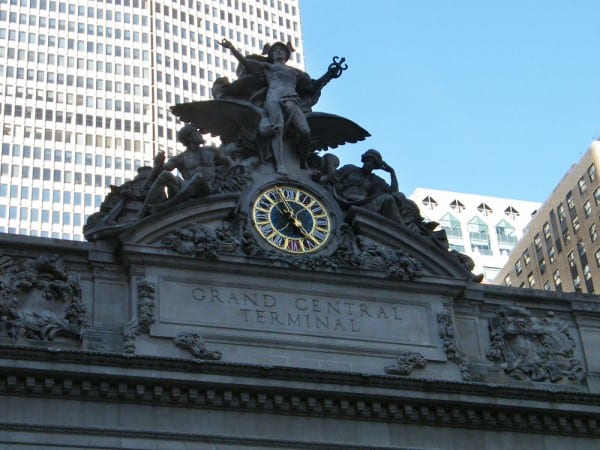
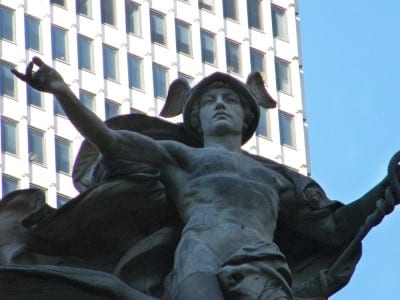
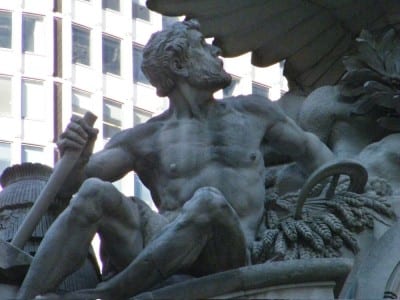
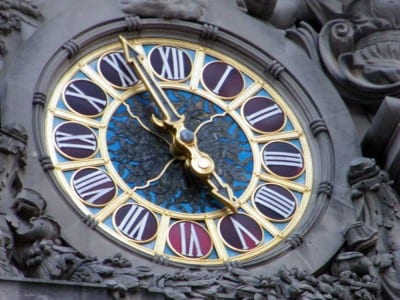
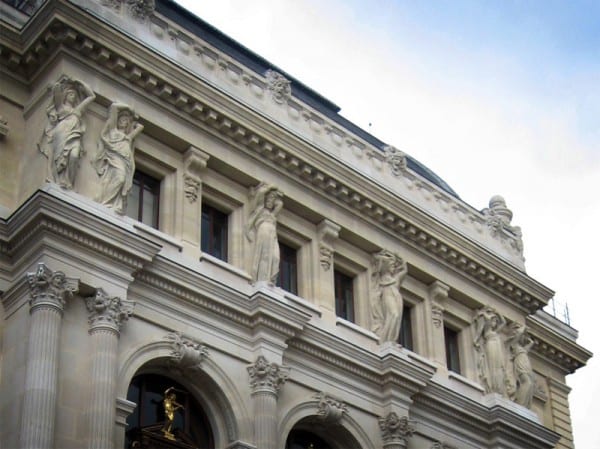
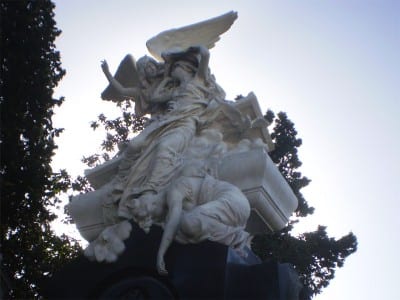
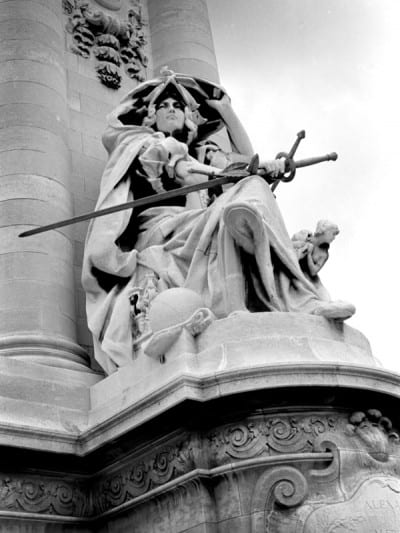
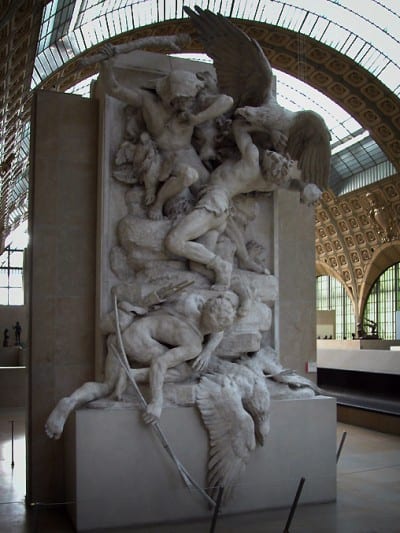
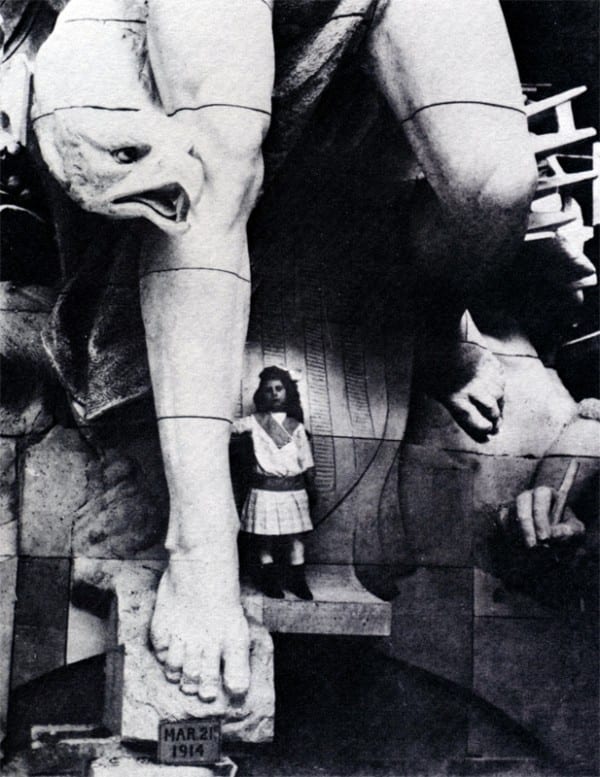
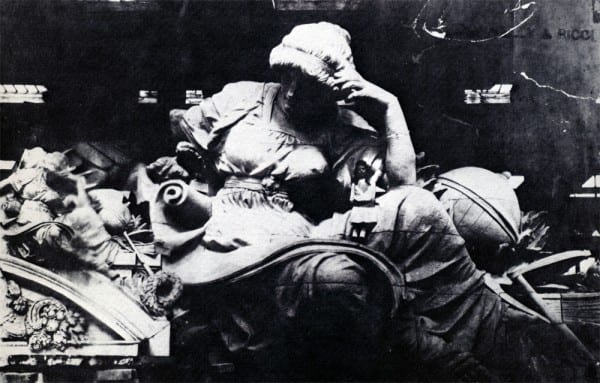

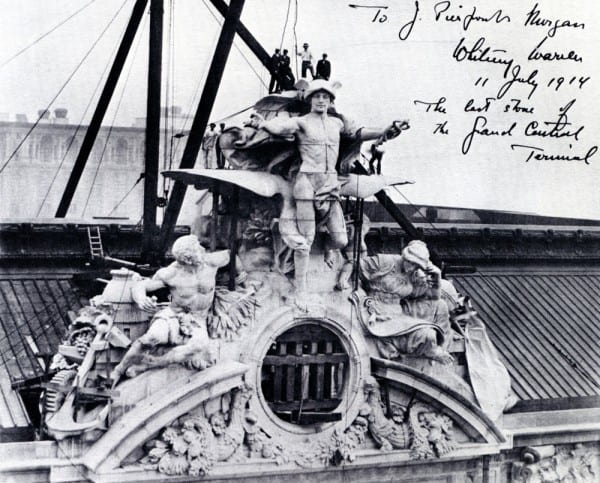
Thanks for sharing the 1914 photos, Emily — seeing people next to the sculptures give a great perspective on the size.
Hello,
I am hoping I can use your 1914 image of the people atop the “Transportation” sculpture, I would like to use it for a GCT exhibit at the Sono Switch Tower Museum in South Norwalk CT. Of course you will recieve credit.
Thank You,
Dana